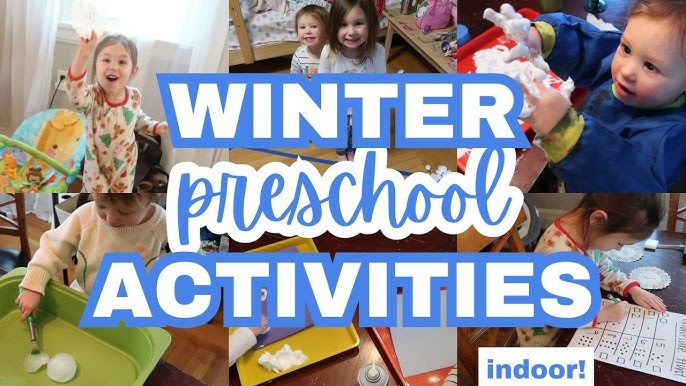Winter Activities for Preschoolers
Winter is a magical time of year that offers endless opportunities for hands-on learning and creative exploration. Early childhood educators and preschool teachers can use the winter season to engage little ones in both indoor and outdoor winter-themed activities. These activities not only keep children entertained but also promote fine motor skills, sensory development, and social interactions. Here’s a guide filled with winter activity ideas to enhance your classroom curriculum, complete with modifications for individual development levels, material lists, and estimated time requirements.
1. Winter Wonderland Sensory Bin
Materials Needed: Cotton balls, pom-poms, plastic arctic animals, fake snow, scoops, and small containers
Time: 20-30 minutes
Description: Fill a bin with fake snow, cotton balls, and winter-themed items for a fun and engaging sensory activity. Add scoops and containers for sorting activities.
Skills Developed: Sensory exploration, fine motor skills, and imaginative play.
Modification: For younger children, ensure that toys and play items are large enough to prevent choking hazards.
2. Snowflake Art Creations
Materials Needed: Paper plates, pipe cleaners, paint, glitter, and cotton balls
Time: 20-30 minutes
Description: Encourage children to create their own snowflakes using pipe cleaners and decorate them with paint and glitter.
Skills Developed: Creativity, fine motor skills, and self-expression.
Modification: Pre-assemble the pipe cleaner snowflakes for children who may need extra support.
3. Hot Cocoa Dramatic Play Station
Materials Needed: Pretend mugs, marshmallows, pom-poms, cotton balls, and empty cocoa containers
Time: 20-25 minutes
Description: Set up a pretend hot cocoa stand where children can “serve” cocoa and marshmallows to their peers.
Skills Developed: Social interactions, imaginative play, and language development.
Modification: Provide picture instructions or prompts for children needing additional guidance.
4. Science Experiment: Melting Ice Cubes
Materials Needed: Ice cubes, salt, food coloring, and trays
Time: 15-20 minutes
Description: Have children observe how salt and food coloring interact with ice cubes. Encourage them to describe the melting process.
Skills Developed: Observation, language development, and science exploration.
Modification: For younger children, simplify by letting them explore ice cubes with warm water.
5. Ice Excavation
Materials Needed: Small toys or objects, containers, water, plastic spoons, salt, spray bottles with warm water
Time: 25-30 minutes
Description: Freeze small toys or objects in containers of water to create ice blocks. Once frozen, let children “excavate” the treasures using tools like plastic spoons, salt, or warm water in spray bottles. This activity combines fun with learning as children experiment with melting ice and uncover hidden surprises.
Skills Developed: Fine motor skills, problem-solving, and an introduction to states of matter.
Modification: Use larger objects for younger children to make excavation easier and prevent choking hazards. For children who might struggle with tools, demonstrate how salt or warm water speeds up the melting process.
6. Ice Painting
Materials Needed: Small ice trays, paper
Time: 15-30 minutes
Description: Freeze colored water in ice cube trays and let the kids paint with these ice cubes on paper. As the ice melts, it creates a beautiful watercolor effect. This activity is a fun way to explore colors and temperature changes.

